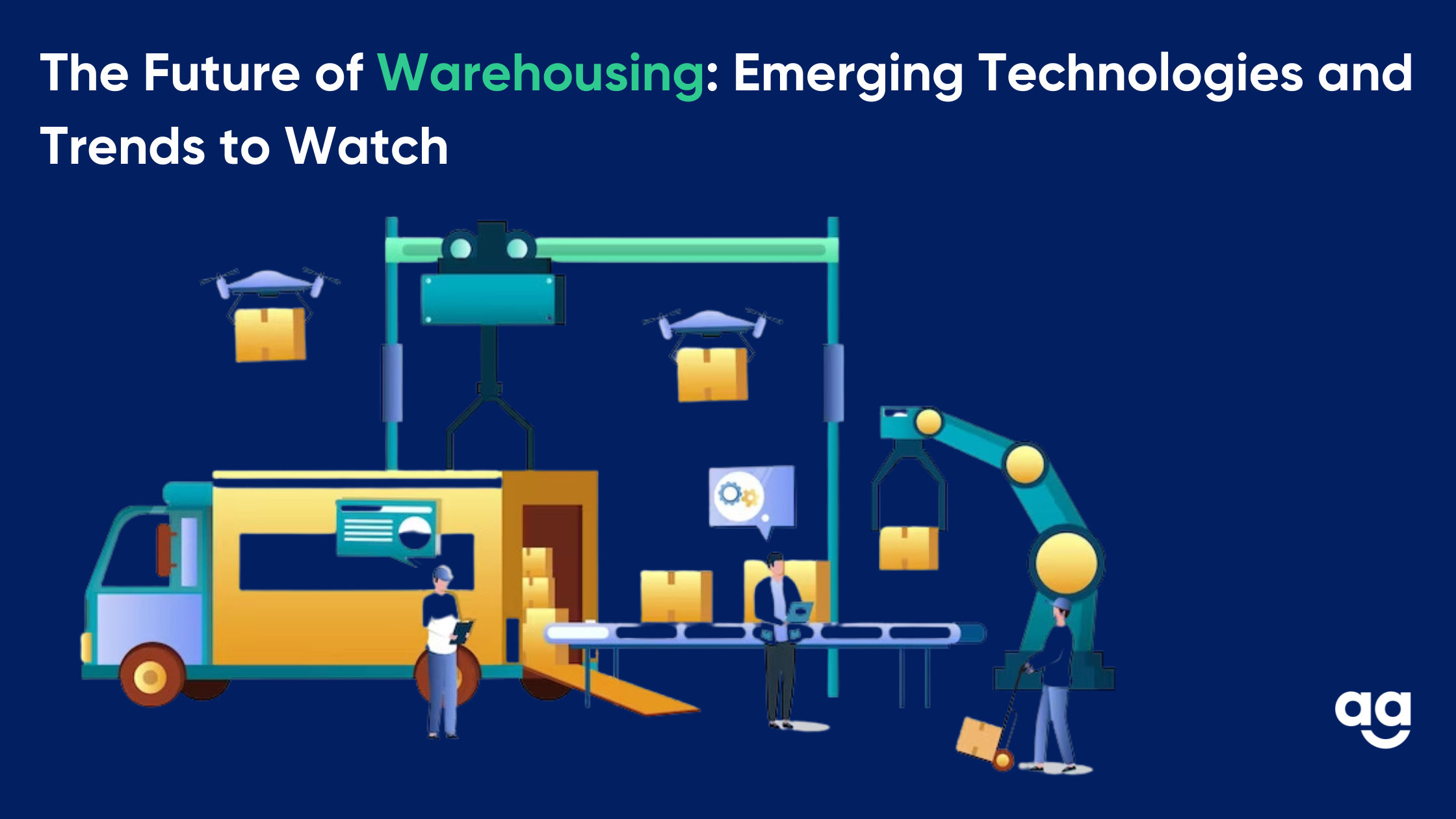Warehousing is an essential part of the supply chain, providing for storage and distribution of goods. The warehousing industry is constantly evolving, with new technologies and trends emerging that can transform the way warehouses operate.
In this blog, we’ll discuss some of the emerging technologies and trends to watch in the future of warehousing.
Emerging Technologies in Warehousing
1. Robotics and Automation
One of the emerging technologies in warehousing is robotics and automation. Robotics and automation can help warehouses improve their efficiency, accuracy, and safety, by automating repetitive and dangerous tasks, such as picking, packing, and transporting goods.
Robotics and automation can also help warehouses reduce their labor costs, by replacing or augmenting human workers with machines.
Moreover, robotics and automation can also help warehouses adapt to changing demand and customer preferences, by enabling flexible and scalable operations. Robotics and automation can include autonomous mobile robots (AMRs), automated guided vehicles (AGVs), robotic arms, and drones, among others.
2. Artificial Intelligence and Machine Learning
Another emerging technology in warehousing is artificial intelligence (AI) and machine learning. AI and machine learning can help warehouses improve their decision-making, forecasting, and optimization, by analyzing large amounts of data and identifying patterns and insights. AI and machine learning can also help warehouses reduce their errors and waste, by predicting and preventing quality issues and supply chain disruptions.
Moreover, AI and machine learning can also help warehouses enhance their customer service and engagement, by personalizing and customizing their offerings and interactions. AI and machine learning can include predictive analytics, natural language processing (NLP), computer vision, and chatbots, among others.
3. Internet of Things and Sensors
Another emerging technology in warehousing is the Internet of Things (IoT) and sensors. IoT and sensors can help warehouses improve their visibility, tracking, and monitoring, by connecting and collecting data from various devices and objects. IoT and sensors can also help warehouses optimize their resource utilization, by detecting and responding to changes in the environment and the operations.
Moreover, IoT and sensors can also help warehouses enhance their safety and security, by detecting and preventing accidents and thefts. IoT and sensors can include RFID tags, temperature sensors, motion sensors, and smart cameras, among others
Trends to Watch in Warehousing
1. E-commerce and Omnichannel
One of the trends to watch in warehousing is e-commerce and omnichannel. E-commerce and omnichannel are transforming the way customers shop and receive goods, by offering more convenience, speed, and choice. E-commerce and omnichannel are also creating new challenges and opportunities for warehouses, by requiring faster and more flexible operations, and by enabling new business models and partnerships.
Moreover, e-commerce and omnichannel are also increasing the demand for real-time visibility and tracking, by customers and retailers alike. Warehouses that can provide accurate and timely information about the status and location of their goods can gain a competitive advantage in the e-commerce and omnichannel market.
2. Sustainability and Green Logistics
Another trend to watch in warehousing is sustainability and green logistics. Sustainability and green logistics are becoming more important for customers, regulators, and investors, as the environmental and social impacts of the supply chain are becoming more visible. Sustainability and green logistics can help warehouses reduce their carbon footprint, waste, and pollution, by adopting more efficient and renewable practices and technologies.
Moreover, sustainability and green logistics can also help warehouses enhance their reputation and brand value, by demonstrating their commitment to social responsibility and innovation. Warehouses that can provide sustainable and green solutions to their customers and partners can differentiate themselves from their competitors and attract more business.
3. Collaboration and Integration
Another trend to watch in warehousing is collaboration and integration. Collaboration and integration are becoming more important for warehouses, as the supply chain is becoming more complex and interconnected. Collaboration and integration can help warehouses improve their communication, coordination, and cooperation, with their customers, suppliers, and partners.
Moreover, collaboration and integration can also help warehouses reduce their costs, risks, and inefficiencies, by sharing resources, information, and expertise. Warehouses that can collaborate and integrate with their stakeholders can create more value and innovation for their customers and partners.
Conclusion
The future of warehousing is full of opportunities and challenges, as new technologies and trends emerge and evolve. By embracing the emerging technologies of robotics and automation, artificial intelligence and machine learning, and the Internet of Things and sensors, warehouses can improve their efficiency, accuracy, and safety, and adapt to changing demand and customer preferences.
By following the trends of e-commerce and omnichannel, sustainability and green logistics, and collaboration and integration, warehouses can create more value and innovation for their customers and partners, and stay ahead of the competition.







 Shipping
Shipping







